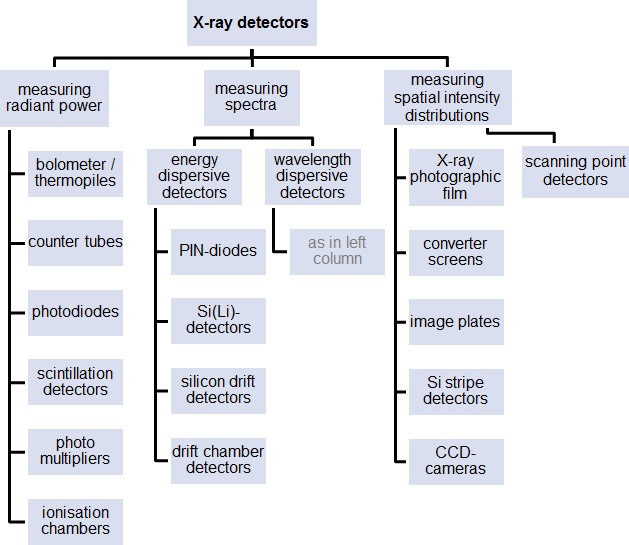There are different types of X-ray detectors for different applications. All X-ray detectors make the effect of X-rays visible or convert X-rays in a measurable signal. The conversion of X-rays into a useable signal should be as effective as possible.
X-ray detectors are classified in three categories (see VDI-guideline 5575). The first category measures the radiant power of incident X-rays. The second group of spectral sensitive detectors measures the wavelength dependend intensity distribution of incoming X-rays. The last group measures the spatial intensity distribution of X-rays. Many detectors are mixed forms where one characteristic is dominant.

Fig. 1: Classification of different X-ray detectors
Detectors measuring radiant power sum up the energy of incoming X-rays and deliver a value proportional to the radiant power. In some detector types the output signal corresponds to the number of detected photons.
The sub-division into energy and wavelength dispersive detectors has historic reasons. Originally wavelength dispersive detectors had a higher spectral resolution than so called energy dispersive detectors. Mostly in wavelength dispersive detectors an optical element before the detector split the spectrum of the incoming X-rays, so the detector itself did not have to have a high spectral resolution. Energy dispersive detectors had a lower spectral resolution. Today the border between both typen has become vague, but the names are still used.
Detectors measuring the spatial intensity distribution of X-rays are differentiated in two dimensional area detectors and in point detectors scanning an area. Some detectors even measure a three dimensional intensity distribution.


